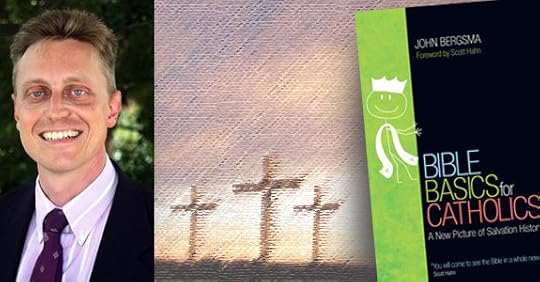A Scripture Primer for a Skeptical Age

A Scripture Primer for a Skeptical Age | Thomas P. Harmon | Catholic World Report
John Bergsma’s new introduction to the Bible is concise and accessible, with a humorous touch.
There
is a lovely early American hymn entitled “Fulfillment” that begins,
See how the Scriptures are fulfilling,
Poor sinners are returning home;
The time that prophets were foretelling,
With signs and wonders now is come.
The gospel trumpets now are blowing
From sea to sea, from land to land;
Much
of the exuberance of the early Christians stemmed from the extraordinary realization
that the Scriptures had been fulfilled within their lifetimes and in their
sight (one is tempted to say, right under their noses). Their exuberance is present in Peter’s speech
to the crowds on Pentecost, when he points out Christ’s fulfillment of the
promises given to David with a chain of references to the Prophet Joel and the
Psalms (Acts 2:14-36); it’s also present in Paul’s speech in the Synagogue in
Antioch, where Paul shows that Christ is the fulfillment of God’s dealings with
Israel from Moses to David (Acts 13:13-41). Christ’s words in Matthew 13:17
nicely capture the bewilderment of the early Christians that so many of their
fellows remained unmoved: “Truly, I say to you, many prophets and righteous men
longed to see what you see, and did not see it; and to hear what you hear, and
did not hear it.”
The
message that Christ fulfilled the Scriptures was the bedrock of the early
Christian mission to the Jews and the source of much of their energy. That
exuberance has continued to be vital force in the Church ever since. But the
message that Christ fulfilled the Scriptures has been obscured in recent years.
The modern methods of interpreting the Bible, often subsumed under the heading
of “the historical-critical method,” have given us many good things. We know
more about biblical times, the languages of the Bible, the natural and
architectural environment of the Bible, etc., than we ever have before. At the same time, those discoveries have been
bought at a price. The historical-critical method proceeds by breaking up the
Bible into its constituent parts, examining texts and parts of texts for their
source, form, and context. The underlying assumption of most
historical-critical scholarship is that, not only can we not rely on the divine
inspiration of Scripture to provide unity to the Bible, but even the individual
books and parts of individual books are the result of random, subrational
processes. We cannot, therefore, find unity in the books of the Bible even on
the human level. The result is that, when the unity of the Bible is denied, so
also is its intelligibility. It is no wonder so many contemporary people find
Christianity unbelievable when a large percentage of those who spend their
lives studying the Bible think that it is unintelligible.
Carl E. Olson's Blog
- Carl E. Olson's profile
- 20 followers



